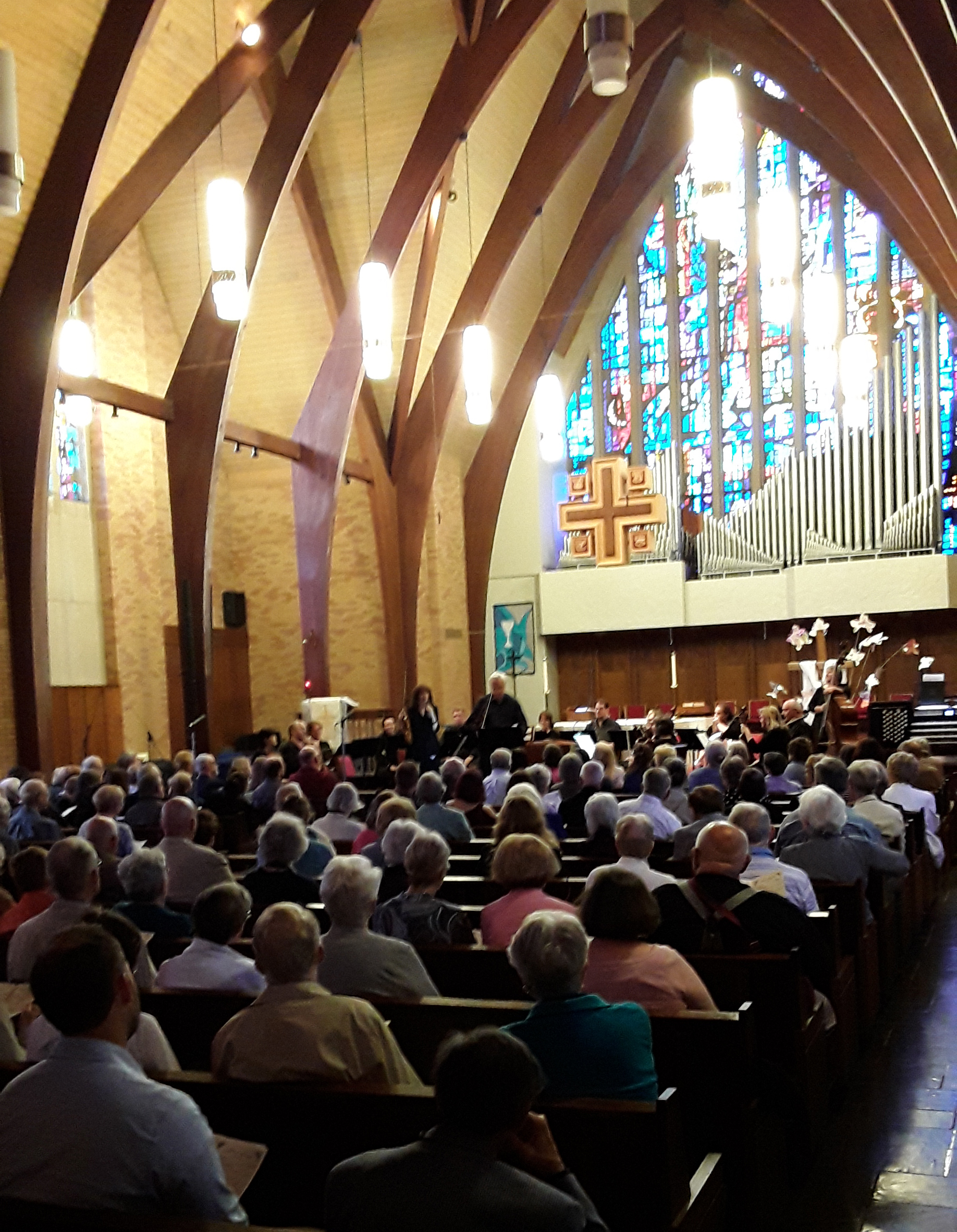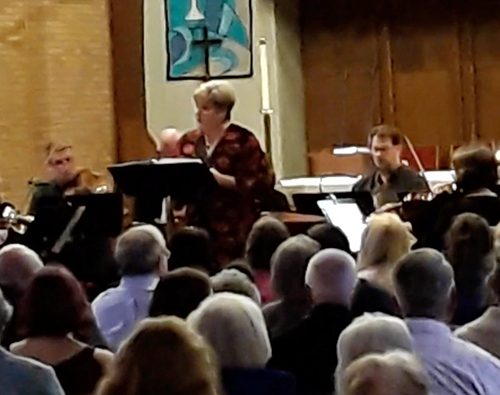by Daniel Hathaway

Jean-Philippe Rameau’s Concerts Sextuor No. 6 opened the program with a first-movement nod to nature in the form of a hen (“La Poule”) whose pecking was cleverly depicted in the violins. Less topical but delightful were the menuets, “L’Enharmonique” and “L’Egyptienne,” that followed.
Alan Bodman both led and soloed in Vivaldi’s “Spring” concerto, in addition to giving verbal program notes that related the composer’s musical effects to phrases in the descriptive sonnets (maybe written by Vivaldi). Ensemble was admirably tight as the strings painted the vernal scenes with relaxed exuberance.
Robert Mollard gave a brief demonstration of the Schantz organ’s ability to imitate the songs of the cuckoo and the nightingale that Handel embedded in his F-major Organ Concerto. Part of the organ is located at the far end of the church, allowing long-distance conversation among the birds. Mollard chose sparkling but subtle registrations that blended well with the strings and oboes but still sounded like solo lines. The instrument features an electronic harpsichord register that he put to good use. (Handel himself played from a chamber organ with a built-in set of plucked strings, allowing him to act as both soloist and continuo player.)

Amy Barlowe gave some background about her setting of Wendell Berry’s The Peace of Wild Things, then illustrated some details in the score with Wallin’s assistance. The passacaglia-like piece, receiving its first performance on Sunday, lasts under four minutes, but treats the poet’s words about finding peace and grace in nature with clarity and sensitivity. It ends on a surprising, ecstatic high note which Wallin let ring out for a long moment in the lively acoustic of the nave.
Barlowe’s second compositional contribution was a new second movement for Bach’s Third Brandenburg Concerto. (The manuscript for the movement includes only two chords.) Lazy performers dutifully play them and go on, but more creative souls improvise slow movements of various lengths — or adapt other Bach movements to fill the void. Amy Barlowe has crafted a Siciliano for solo violin that worked nicely as a bridge between two energetic movements in G Major, and Alan Bodman gave it a convincing debut on Sunday.
Bach’s own movements were crisply played by the strings of Akron Baroque, who don’t make equipment changes to play Baroque music, but do a good job putting the material across on modern instruments — while making a nod to some historical techniques.
Published on ClevelandClassical.com June 4, 2019.
Click here for a printable copy of this article



